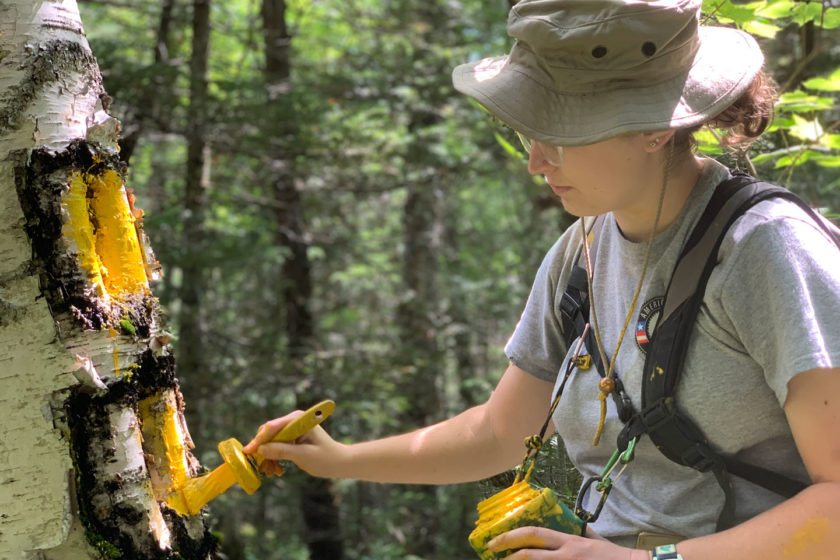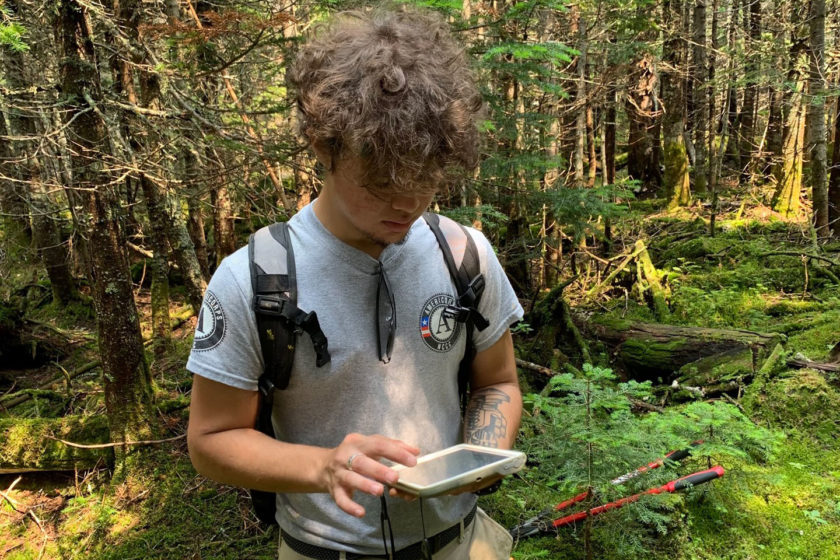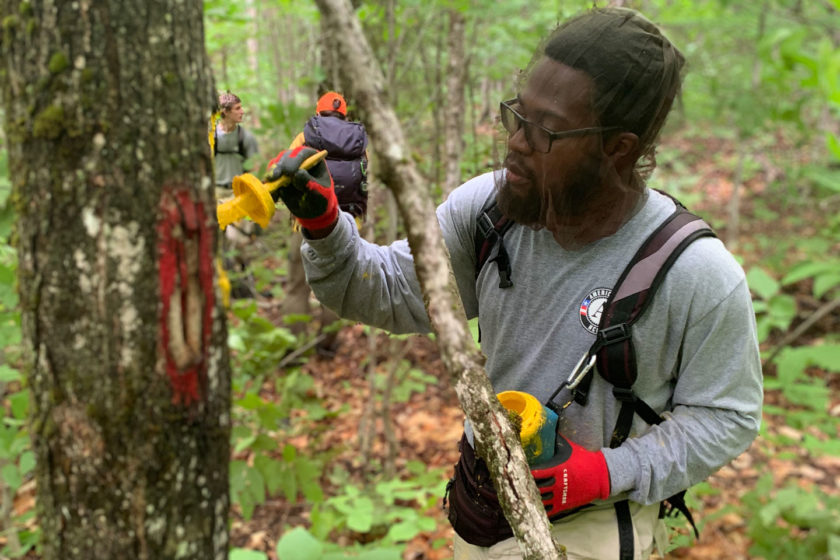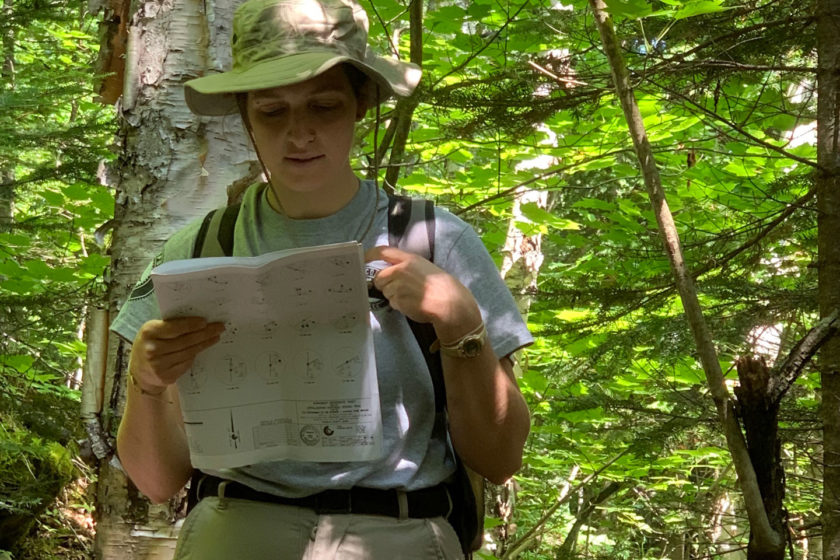Kacie L. Simmons, AmeriCorps NCCC–North Central Region
The Mountain and the “Monties”
November 24, 2021
Before this year, I had never driven a 15-passenger van, steered a tractor, installed drywall, repackaged nearly 39,000 pounds of macaroni, crawled through a cave, traveled extensively throughout the United States, climbed a mountain or set foot on the Appalachian Trail (A.T.). Since becoming part of the AmeriCorps National Civilian Community Corps (NCCC), a national service program where young adults (ages 18-26) spend 10 months traveling around the country in teams of 8-12 members, I have had all of these experiences and more.
Our eight-person team, “Maple 3,” hails from different states across the country and has been working on a variety of service projects: taking care of the Olentangy Watershed in Ohio, preparing Camp Esquagama for campers in Minnesota, repacking and rescuing food in Iowa and working on and along the A.T. in Carrabassett Valley in Maine.
When we were told that our next project was going to be maintaining the boundary of the A.T., climbing mountains was not what I had in mind. Yet here I was, faced with a geographical culture shock: a mountain.

An NCCC member measures the distance and sightlines between A.T. boundary blazes, ensuring that they can be easily seen.
The half-mile hike up the service road to our housing at Maine Huts & Trails Stratton Brook Hut quickly put me in place. Gone was the belief that hiking multiple miles per day was going to be easy. As a veteran walker from the flat prairies of suburbanized Texas, the steepness of the Trail was a whole new adversary. Thankfully, I wasn’t alone in my newfound challenge. Only a few members of the Maple 3 had any experience hiking in rugged, mountainous terrain. While everyone is incredibly skilled and disciplined in some form or another, all of us were challenged daily, pushing ourselves to new physical, mental, emotional and spiritual limits.
Our first few days on site were a nice introduction to the work of maintaining the boundary of the A.T. We learned about the Appalachian Trail Conservancy (ATC), which manages, maintains, and advocates for the A.T. and its surrounding landscapes, and met the ATC Land Stewardship Technicians, our sponsors who help maintain, monitor and mitigate threats to the A.T. corridor. By maintaining the boundary, the A.T. corridor is visible to those that use the land, helping protect the Trail corridor from encroachment, timber theft, illegal dumping, hunting and more.
Our days were filled with hiking incredibly steep, rugged areas both on and off the Trail, which had us drenched in sweat and/or rain, exhausted and starving for dinner. You could find us shoving food in our faces at the trucks as we regrouped and cleaned up for the day, and then again in the kitchen for a hefty pre-dinner.
Despite the hard work, none of it negatively impacted our moods — if anything, it made us all feel better and more accomplished. There is something great about seeing your teammates grinning about how they’ve now hiked a mountain. We got to spend all day “playing” in the forest, surrounded by natural beauty, searching for “Monties” (short for monuments – metal survey markers) and yellow blazes on the A.T. boundary line.
For me, the best day was also my hardest when we hiked to the summit of North Crocker Mountain. As the fourth highest mountain in Maine, Crocker Mountain’s peak is at 4,228 feet. Our mission was simple: hike to the summit via the A.T., bushwhack to the corridor boundary and complete the boundary recovery on the hike down.
While we started at a good pace, I quickly found myself falling to the back of the line on the hike up. I was getting tired and anxious, feeling like we’d never make it to the top. Still, we kept climbing. The ATC crew and our team kept motivating each other, taking breaks when we needed them and playing word games and riddles to distract ourselves from the exhaustion we felt creeping in. After what seemed like hours, we finally made it to the top and, with an incredible view, we sat down for the most delicious lunch that I’ve ever had.
With full bellies, we bushwhacked our way to the boundary line, which is painted with yellow blazes. We repainted these blazes so that they could be seen on both sides of the boundary and cut any brush that prevented a clear line of sight between blazes. We followed this boundary line down the mountain, clearing and repainting blazes until we came across a survey monument. Once found, we would clean it, flag it with a pink piece of nylon fabric and log any information that could be useful to future surveyors. Once the day ended, we were tired yet joyous — we had all officially climbed a mountain.
Before I began this role, I had heard that AmeriCorps was going to be the toughest job I’d ever love. That description describes my time with AmeriCorps and the ATC very well. Many of the days were tough and long, forcing us to climb both literal and proverbial mountains. But these rugged paths would lead to new amazing experiences every day. We got the chance to learn so many new things: why our tasks were important, about the communities we were serving and — maybe most importantly – learning new things about ourselves and what we are capable of accomplishing.
Discover More

A Century of Inspiration
Benton MacKaye: Celebrating a Vision
2021 marks the 100-year anniversary of the publication of Benton MacKaye’s groundbreaking article proposing the Appalachian Trail. Even after a century, MacKaye’s original vision continues to inspire and guide us.
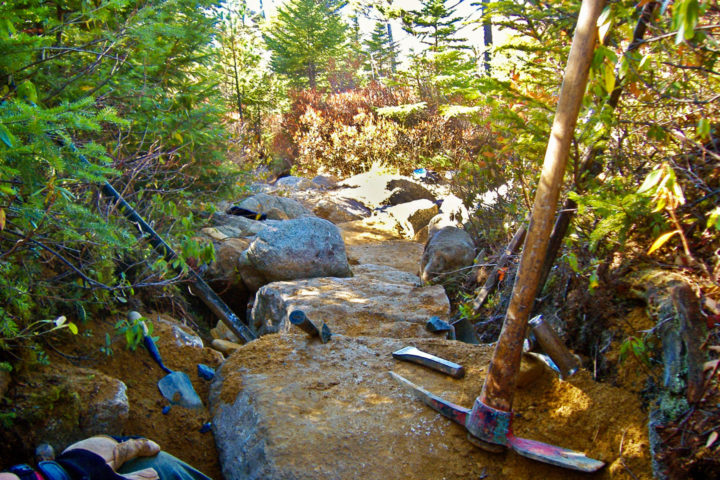
Official Blog
Ritual of the Trail
Writer Michael Garrigan provides a glimpse into his most important ritual: stewarding the Trail so that future generations can “sink into its soil.”

Official Blog
The Whiskey Hollow Six
A two-day backpacking trip on the Appalachian Trail helped a group of six women find comfort in nature’s embrace and reexamine the artificial boundaries we often create for ourselves.


